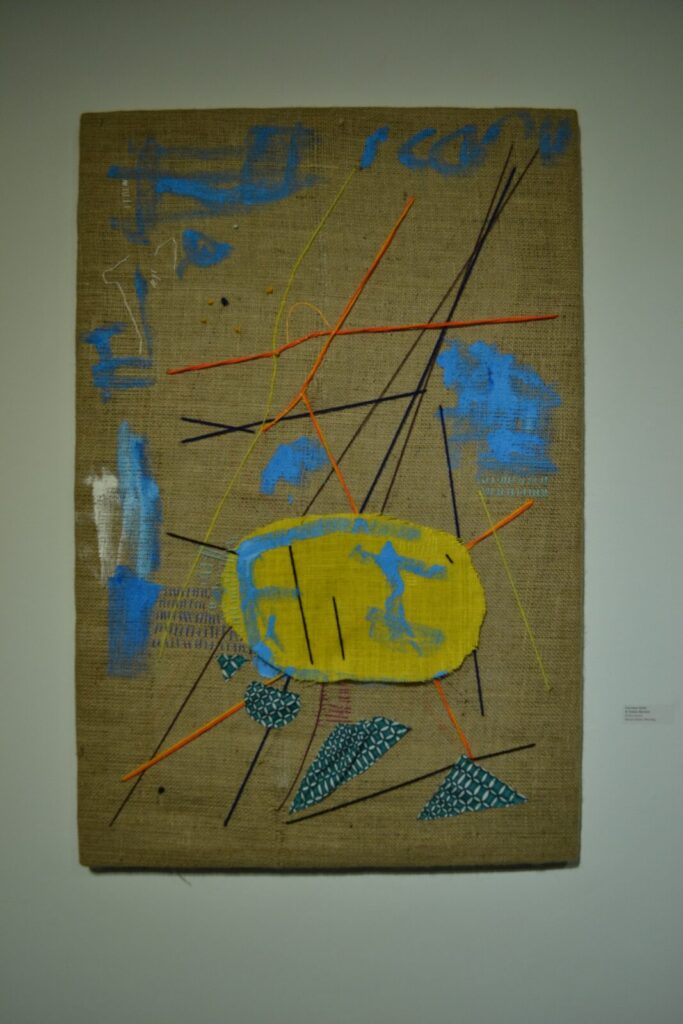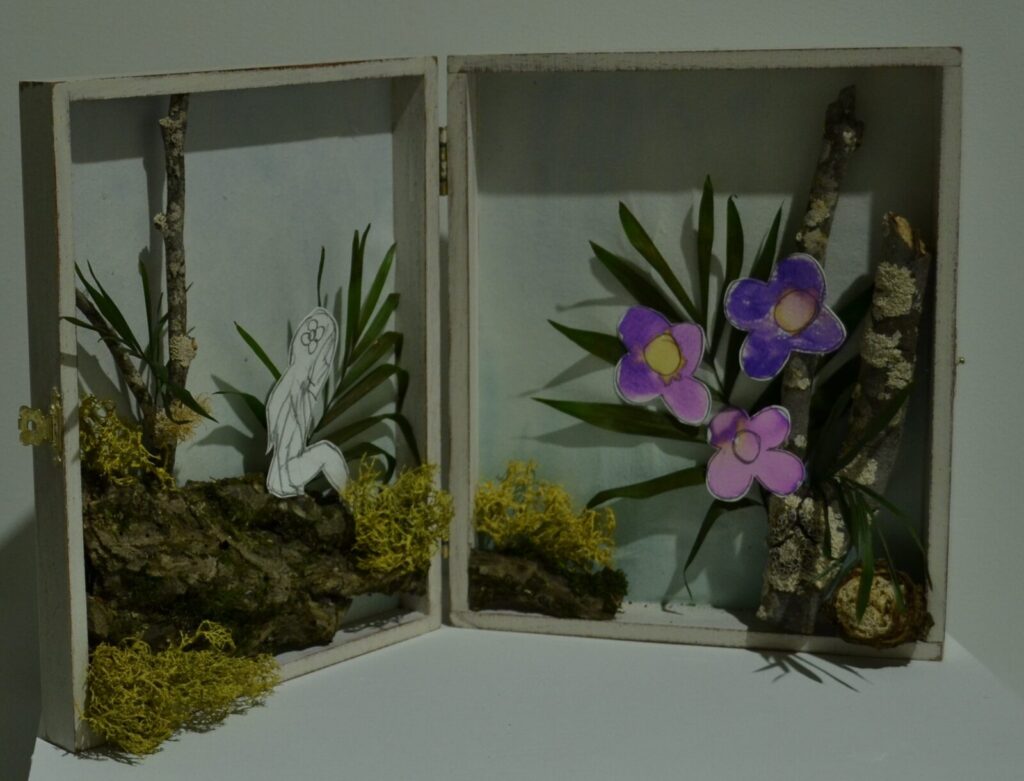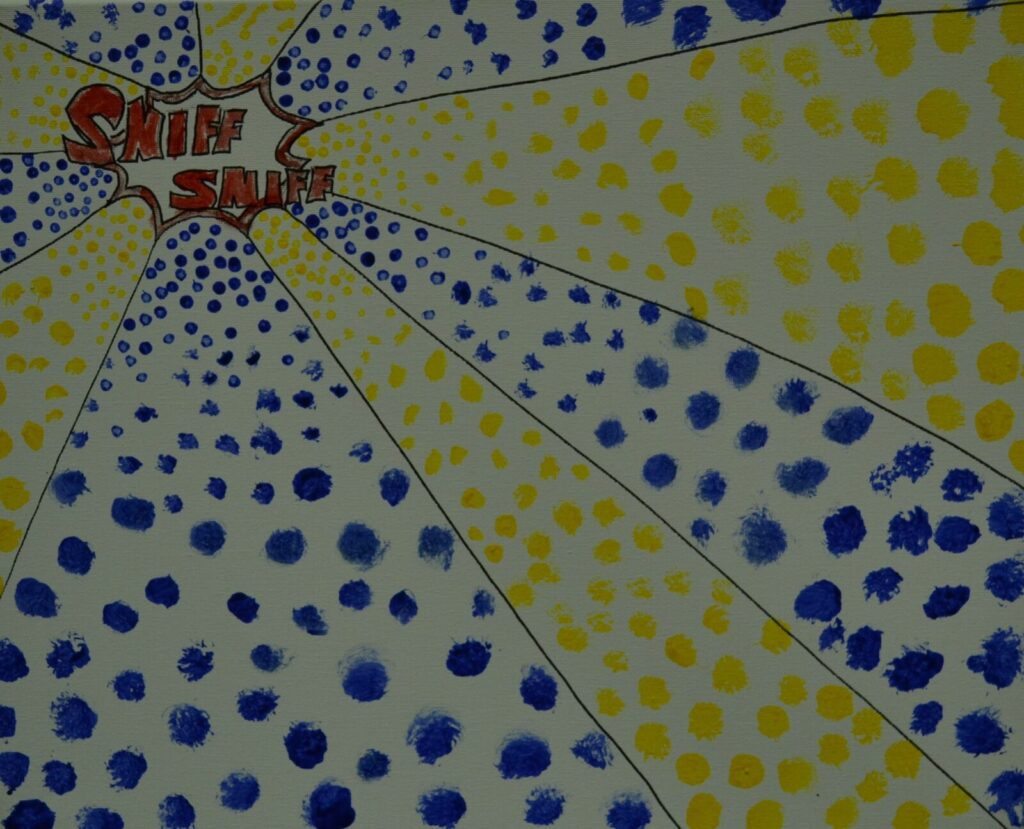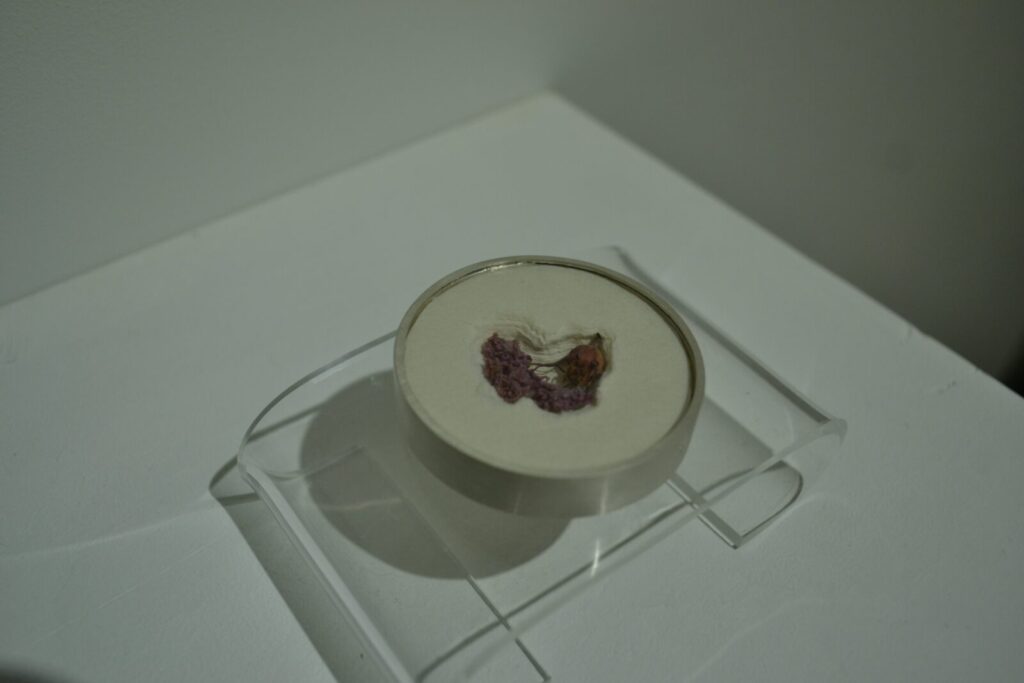At Murray State University’s Doyle Fine Arts Building, nestled between the sixth and seventh floor, the Clara M. Eagle Upper Gallery is currently hosting the annual exhibition, Side by Side, produced by the Murray Art Guild, the Murray State University art education program, and VSA Kentucky. The “Side by Side” program is dedicated to providing MSU art education students opportunities to work with community artists on a professional level. This year, the program collaborated with VSA Kentucky, a group that fosters art education programs for youths and adults with disabilities in Kentucky. The project was led and coordinated by Debi Henry Danielson, current Director of the Murray Art Guild, and Dr. Rebecca Williams, Assistant Professor of Art Education at Murray State University. The 2018 workshop theme was “The Hero in You: Save the Day!†and will run through to July 9th.
The initial workshop began with eight art education students facilitating a group of eight participants in the K-12 age bracket tasked with creating a superhero persona for themselves, which involved creating their own costumes, comic panels, and Pop art inspired paintings. However, the project extended beyond the theme of superheroes and comic books, as each of the workshop participants coordinated with eight community artists to create a collaborative artwork. Each of the community artists also displayed individual works next to their partnered participant, making the exhibition feel cohesively structured to show each pairing of artists in their mutual effort for the project.
As different as the pieces might appear in the exhibition, they actually work to create a unique show for viewers by juxtaposing sensory experiences in art through choice in media. The exhibition replicates the artist bringing their artistic vision into a physical reality by complicating the viewer’s position in what they consider real or imagined in media. Overall, the show really touches on how people engage with art making and art viewing, particularly in the ways these experiences bridge the imagined and the real through the use of senses.

Sitting directly at the center of the show, Garrison Kelly and Elaina Barnett’s Rollercoaster prepares visitors for a sensory experience through media as soon as they ascend the stairs to the upper gallery. Categorized as a mixed-media drawing, the piece uses a burlap canvas with various pieces of thread, yarn, and fabric stitched on top with minimal dashes of paint. Immediately, the viewer tackles a piece so abstract, yet with a title that beckons to something figurative, a struggle ensues on how to read the placement of the various media or if there are particular meanings attached to their composition. At the same time, there is an entirely different struggle on how to categorize the piece, as it is at once suggestive of a drawing with the use of canvas and paint, but also something very sculptural in the fabric and stitching.
One of the dominating features of the gallery are the displays of each participants’ comic strips and costumes. The comic panels featured photographs of participants acting out different scenes and poses within two-dimensional settings for their personas to perform heroic tasks, with costumes made from various materials next to them. Each of the participants in the workshop not only worked on creating a fictional character within a fictional setting, but were meant to imagine themselves embodying these roles. By taking photos of themselves in their respective costumes, they physically embodied their personas, bringing their imagined idea into a physical reality.

For example, Ezrah Siler created The Origin of Animal Lady, where she shows the development of her character as she discovers her powers to communicate and save animals within five panels. This was made by combining a two-dimensional, drawn setting with photos of Siler in costume, as she interacts with the imagined environment and characters. This particular piece demonstrates how Siler imagines herself becoming the hero, bridging the gap between what is fantasy and reality when she literally acts out the role.
The use of collage is beneficial because it encourages the viewer to confront different forms of visual media in a single space. The drawing appears very flat and fabricated, making the visual imagination work slightly harder to read the image. Conversely, the photographs are more realistic and dynamic to make the image more recognizable. At once, the viewer notices the differences in visual realism through the choices in media, yet the narrative and composition creates unity between them because there is an understanding of how things cooperate in the panels. The multi-media approach helps facilitate questions for the viewer concerning what is real or imagined in art, similar to the participants embodying and performing a fantasy role.

Similarly, the piece Purple Flowers, created by Olivia Potter and Jo Bennett, displays the potential for different media to cooperate through the use of a bi-fold shadow box. On the left, a paper cut-out of a girl sits on a tree, surrounded by moss and other plant-life, while the right shows similar flora and cut-outs of purple, watercolor flowers. The mixed media piece plays on the idea of two and three-dimensional objects coming together within a single space. The viewer is met with the immediacy of sculptural realism in the greenery, as the moss encroaches out of the display and the plant-life appears real. Contrasting this are the drawings of the figure and flowers, but they are composed in such a way to encourage their natural place in the composition, even contributing to the background shadows in a holistic and consistent way that unites the objects within.
In this exhibition, the participants also created paintings with onomatopoeia, or words that represent sounds, often used in comic books as a means to communicate sound through text. Jayson Walker’s Sniff Sniff captures the essence of a comic book by using dots to create color fields, much like Ben-day dots, and an action bubble to outline the words “sniff sniff.†This is very interesting in the process of art making and the viewer’s senses because the eye can recognize dots of color individually, while also seeing the larger sections alternating between blue and yellow.

The viewer can also read the text as a sensory experience by recognizing the codes and meanings attached to the language, or understanding the visual and auditory aspects when one hears the mental “voice” while reading. In Walker’s case, we understand “sniff sniff†to represent the sound of breathing in through the nose or the action of “sniffing,” perhaps even mimicking the action to smell the gallery itself. Part of this process crosses between what viewers experience in a physical reality and what they experience in their minds, or seeing an image versus contextualizing and complicating it mentally or sensorily.
Part of the success in the exhibition is the way dissimilar forms of media and differences between artists can actually come together to form cohesive thought and experiences. Kimberly Kinsland’s embroidered Fanta Sea really represents this ideal, as the media utilizes individual threads of different colors to collectively create a figurative mermaid looking on at a sunset. The thread is sewn in particular ways to create patterns for the eye to recognize, like the horizontal waves or the sandy french knots. The medium is also the perfect intersection to demonstrate a two-dimensional image and the sculptural potential of embroidery, reiterating the sensory experience from other media in the show.

Throughout Side by Side, difference is emphasized and embraced between the artists and workshop participants, particularly in the ways media is used. It is a space where woodworking and metallurgy seamlessly coexist with drawing and embroidery. At its core, it sparks a conversation about the value of the art making process, and encourages the viewer to experience the diversity through sensation of those media.




